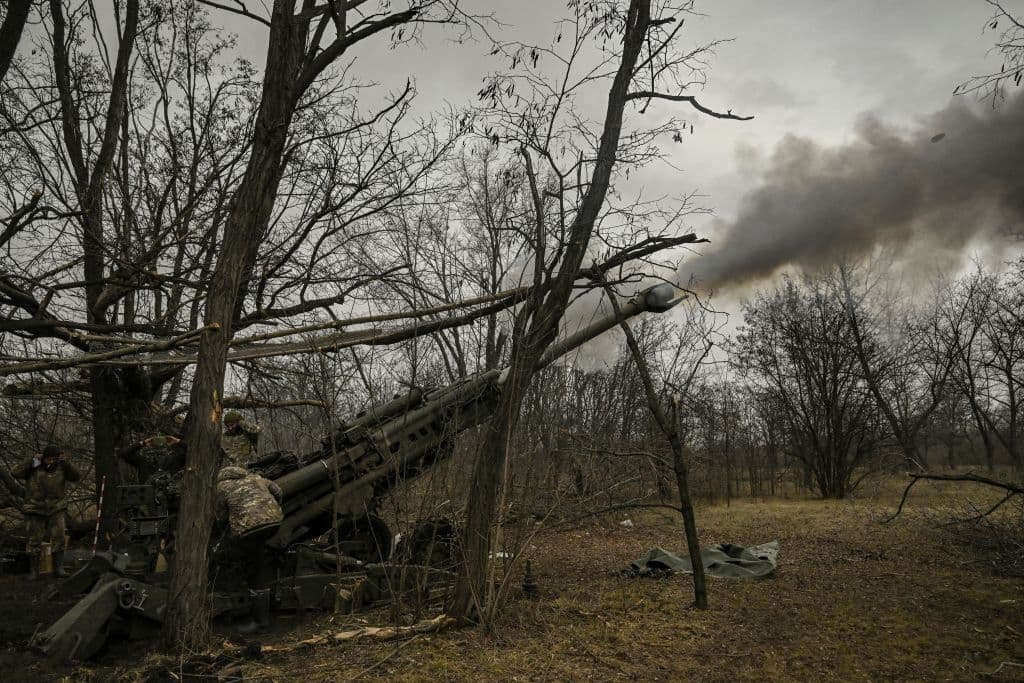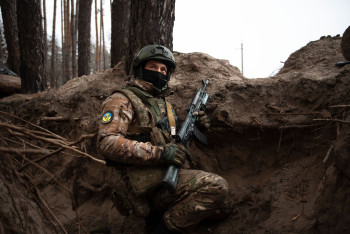Ukraine war latest: Ukraine vows to hold Bakhmut, as Wagner storms industrial zone in city’s northwest

Key developments on March 14:
- Zaluzhnyi: Bakhmut defense ‘key in stability of entire front’
- Prigozhin claims his Wagner mercenaries crossed river, took ‘full control’ of plant in northwestern Bakhmut
- Russian fighter jet crashes into US drone over the Black Sea
Ukraine vowed on March 14 that it would hold on to Bakhmut despite Russia’s grinding assaults since losing the city would affect “the stability of the defense of the entire front.”
Ukraine’s Commander-in-Chief Valerii Zaluzhnyi said that the defense of Bakhmut, a city in the eastern Donetsk Oblast nearly emptied of its 70,000 residents, is of “paramount strategic importance for deterring the enemy.”
“It is key in the stability of the defense of the entire front,” Zaluzhnyi said in a Telegram post.
President Volodymyr Zelensky, who held a meeting on March 14 with Zaluzhnyi and top military command, said that “all members expressed a common position regarding the further holding and defense of the city.”
The grinding battle of attrition over Bakhmut has raged for eight months, with both sides reportedly suffering heavy casualties. Russia has intensified its offensive on Bakhmut over the past several weeks as it captured neighboring settlements in an attempt to encircle the city.
In a report published on March 14, the Conflict Intelligence Team (CIT), a Russian independent research group analyzing the war in Ukraine, said that fierce fighting raged in the southern and northern parts of Bakhmut.
The CIT said that the front line in southern Bakhmut remained “static,” but heavy fighting also raged near the town of Ivanivske, located southwest of Bakhmut.
In the northern part of Bakhmut, the fighting is raging in the industrial zone, including on the premises of Artemivsk Non-Ferrous Metals Processing Plant (AZOM), according to the CIT’s report.
The fight for AZOM may soon resemble the siege of the Azovstal steel plant in Mariupol, the last Ukrainian stronghold of now fully occupied Mariupol since Bakhmut’s industrial zone is home to many underground fortifications and tunnels, the CIT said.
Yevgeny Prigozhin, who leads the Wagner mercenary group fighting alongside the Russian forces in Ukraine, claimed on March 14 that his troops took “full control” of the AZOM plant.
Prigozhin further claimed in his Telegram post that the fighting still raged in surrounding territories.
Neither the Ukrainian nor Russian authorities commented on the situation at the AZOM plant or reacted to Prigozhin’s claims.
Northwest of Bakhmut, the Russian forces are trying to capture more territories as they launch attacks on the villages of Mynkivka, Orikhovo-Vasylivka, and Hryhorivka, according to the CIT.
It added that the fighting raged on the northwestern outskirts of Bakhmut.
Russian fighter jet crashes US drone
The U.S. Air Force said that one of Russian Su-27 fighter jets struck the propeller of the U.S. MQ-9 drone at around 7:03 a.m. on March 14, forcing it down into the Black Sea.
The drone was conducting routine operations in the international airspace over the Black Sea when a Russian aircraft hit and destroyed it, U.S. Air Force General James B. Hecker said in a statement.
“In fact, this unsafe and unprofessional act by the Russians nearly caused both aircraft to crash,” Hecker said.
The U.S. Air Force said that the Russian Su-27s dumped fuel and flew dangerously close to the U.S. drone several times before the crash in a “reckless, environmentally unsound, and unprofessional manner.”
Despite the U.S. and Russian aircraft constantly flying over the Black Sea since the start of Moscow’s full-scale invasion, this is the first known case of a direct collision between the two countries.
“We call on the Russians to conduct themselves professionally and safely,” Hecker said.
The statement said that the U.S. Air Force conducts routine operations throughout Europe and international airspace in coordination with each country.












